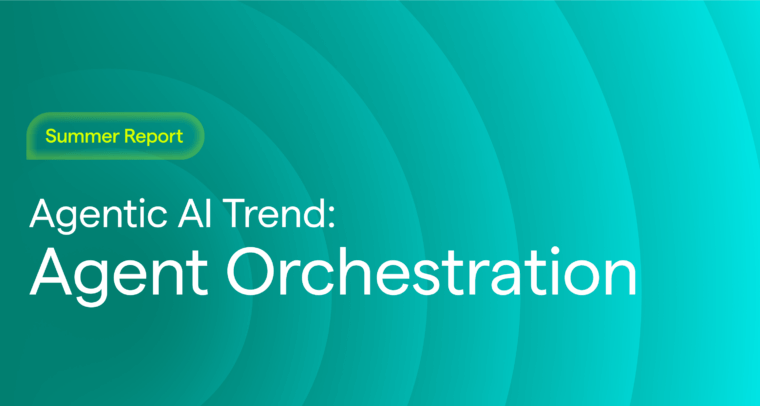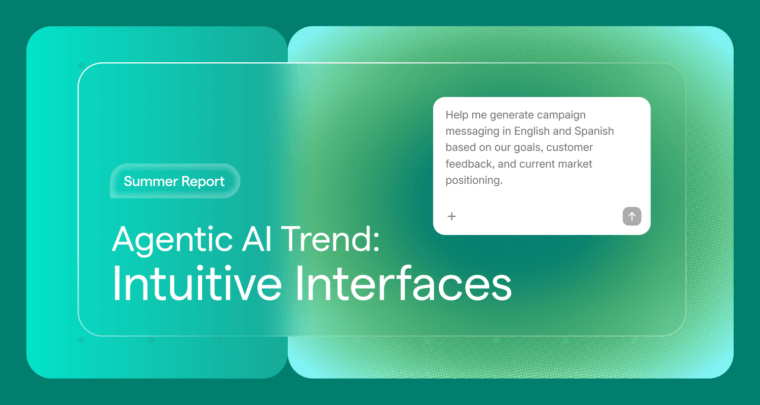
In the rapidly changing field of artificial intelligence (AI), large language models (LLMs) have quickly become a foundational technology. In this article, you’ll learn more about what LLMs are, how they work, their various applications, and their advantages and limitations. You’ll also gain insight into the future of this powerful technology.
Table of contents
What are large language models?
Large language models (LLMs) are an application of machine learning (ML), a branch of AI focused on creating systems that can learn from and make decisions based on data. LLMs are built using deep learning, a type of machine learning that uses neural networks with multiple layers to recognize and model complex patterns in massive data sets. Deep learning techniques enable LLMs to understand complex context, semantics, and syntax in human language.
LLMs are considered “large” due to their complex architecture. Some have up to 100 billion parameters and require 200 gigabytes to operate. With their multi-layered neural networks trained on massive datasets, LLMs excel in language translation, diverse content generation, and human-like conversations. Additionally, LLMs can summarize lengthy documents quickly, provide educational tutoring, and help researchers by generating new ideas based on existing literature.
How large language models work
You can understand how an LLM works by looking at its training data, the methods used to train it, and its architecture. Each factor impacts how well the model performs and what it can do.
Data sources
LLMs are trained on massive datasets, which allows the models to understand and generate context-relevant content. Curated datasets are used to train LLMs for specific tasks. For example, a LLM for the legal industry might be trained on legal texts, case law, and statutes to ensure it generates accurate, appropriate content. Datasets are often curated and cleaned before the model is trained to ensure fairness and neutrality in generated content and remove sensitive or biased content.
Training process
Training an LLM like GPT (generative pre-trained transformer) involves tuning millions or billions of parameters that determine how the model processes and generates language. A parameter is a value the model learns and adjusts during training to improve performance.
The training phase requires specialized hardware, such as graphics processing units (GPUs), and massive amounts of high-quality data. LLMs continuously learn and improve during training feedback loops. In a feedback training loop, the model’s outputs are evaluated by humans and used to adjust its parameters. This allows the LLM to better handle the subtleties of human language over time. This, in turn, makes the LLM more effective in its tasks and less likely to generate low-quality content.
The training process for LLMs can be computationally intensive and require significant amounts of computing power and energy. As a result, training LLMs with many parameters usually requires significant capital, computing resources, and engineering talent. To address this challenge, many organizations, including Grammarly, are investigating in more efficient and cost-effective techniques, such as rule-based training.
Architecture
The architecture of LLMs is primarily based on the transformer model, a type of neural network that uses mechanisms called attention and self-attention to weigh the importance of different words in a sentence. The flexibility provided by this architecture allows LLMs to generate more realistic and accurate text.
In a transformer model, each word in a sentence is assigned an attention weight that determines how much influence it has on other words in the sentence. This allows the model to capture long-range dependencies and relationships between words, crucial for generating coherent and contextually appropriate text.
The transformer architecture also includes self-attention mechanisms, which enable the model to relate different positions of a single sequence to compute a representation of that sequence. This helps the model better understand the context and meaning of a sequence of words or tokens.
LLM use cases
With their powerful natural language processing (NLP) capabilities, LLMs have a wide range of applications, such as:
- Conversational dialogue
- Text classification
- Language translation
- Summarizing large documents
- Written content generation
- Code generation
These powerful applications support a wide variety of use cases, including:
- Customer service: Powering chatbots and virtual assistants that can engage in natural language conversations with customers, answering their queries and providing support.
- Programming: Generating code snippets, explaining code, converting between languages, and assisting with debugging and software development tasks.
- Research and analysis: Summarizing and synthesizing information from large texts, generating insights and hypotheses, and assisting with literature reviews and research tasks.
- Education and tutoring: Providing personalized learning experiences, answering questions, and generating educational content tailored to individual students’ needs.
- Creative applications: Generating creative content such as poetry, song lyrics, and visual art based on text prompts or descriptions.
- Content creation: Writing and editing articles, stories, reports, scripts, and other forms of content.
Large language model examples
LLMs come in many different shapes and sizes, each with unique strengths and innovations. Below are descriptions of some of the most well-known models.
GPT
Generative pre-trained transformer (GPT) is a series of models developed by OpenAI. These models power the popular ChatGPT application and are renowned for generating coherent and contextually relevant text.
Gemini
Gemini is a suite of LLMs developed by Google DeepMind, capable of maintaining context over longer conversations. These capabilities and integration into the larger Google ecosystem support applications like virtual assistants and customer service bots.
LLaMa
LLaMa (Large Language Model Meta AI) is an open-source family of models created by Meta. LLaMa is a smaller model designed to be efficient and performant with limited computational resources.
Claude
Claude is a set of models developed by Anthropic, designed with a strong emphasis on ethical AI and safe deployment. Named after Claude Shannon, the father of information theory, Claude is noted for its ability to avoid generating harmful or biased content.
Advantages of LLMs
LLMs offer substantial advantages for multiple industries, such as:
- Healthcare: LLMs can draft medical reports, assist in medical diagnosis, and provide personalized patient interactions.
- Finance: LLMs can perform analysis, generate reports, and assist in fraud detection.
- Retail: LLMs can improve customer service with instant responses to customer inquiries and product recommendations.
In general, LLMs offer multiple advantages, including the ability to:
- Automate important, routine tasks like writing, data analysis, and customer service interactions, freeing humans to focus on higher-level tasks requiring creativity, critical thinking, and decision-making.
- Scale quickly, handling large volumes of customers, data, or tasks without the need for additional human resources.
- Provide personalized interactions based on user context, enabling more tailored and relevant experiences.
- Generate diverse and creative content, potentially sparking new ideas and fostering innovation in various fields.
- Bridge language barriers by providing accurate and contextual translations, facilitating communication and collaboration across different languages and cultures.
Challenges of LLMs
Despite their multiple advantages, LLMs face several key challenges, including response accuracy, bias, and large resource requirements. These challenges highlight the complexities and potential pitfalls associated with LLMs and are the focus of ongoing research in the field.
Here are some key challenges faced by LLMs:
- LLMs can reinforce and amplify biases in their training data, potentially perpetuating harmful stereotypes or discriminatory patterns. Careful curation and cleaning of training data are crucial to mitigate this issue.
- Understanding why an LLM generates its outputs can be difficult due to the complexity of the models and the lack of transparency in their decision-making processes. This lack of interpretability can raise concerns about trust and accountability.
- LLMs require massive amounts of computational power to train and operate, which can be costly and resource-intensive. The environmental impact of the energy consumption required for LLM training and operation is also a concern.
- LLMs can generate convincing but factually incorrect or misleading outputs, potentially spreading misinformation if not properly monitored or fact-checked.
- LLMs may struggle with tasks requiring deep domain-specific knowledge or reasoning abilities beyond pattern recognition in text data.
The future of LLMs
The future of LLMs is promising, with ongoing research focused on reducing output bias and enhancing decision-making transparency. Future LLMs are expected to be more sophisticated, accurate, and capable of producing more complex texts.
Key potential developments in LLMs include:
- Multimodal processing: LLMs will be able to process and generate not just text but also images, audio, and video, enabling more comprehensive and interactive applications.
- Enhanced understanding and reasoning: Improved abilities to understand and reason about abstract concepts, causal relationships, and real-world knowledge will lead to more intelligent and context-aware interactions.
- Decentralized training with privacy: Training LLMs on decentralized data sources while preserving privacy and data security will allow for more diverse and representative training data.
- Bias reduction and output transparency: Continued research in these areas will ensure that LLMs are trustworthy and used responsibly, as we better understand why they produce certain outputs.
- Domain-specific expertise: LLMs will be tailored to specific domains or industries, gaining specialized knowledge and capabilities for tasks such as legal analysis, medical diagnosis, or scientific research.
Conclusion
LLMs are clearly a promising and powerful AI technology. By understanding their capabilities and limitations, one can better appreciate their impact on technology and society. We encourage you to explore machine learning, neural networks, and other facets of AI to fully grasp the potential of these technologies.






